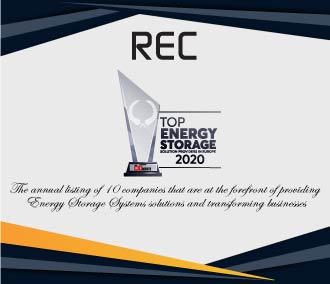 Maja Pozar Andrejasic, CEO and Tine Andrejasic, Head of Product Development
Maja Pozar Andrejasic, CEO and Tine Andrejasic, Head of Product Development
Since the inception of REC, Maja and Tine have had experiences with clients who could not design the energy storage system with technical accuracy from scratch. It was always something changing, something missing, or some new components added. "Therefore, we were forced to make constant adjustments and changes to the battery management system to meet their expectations and realise their ideas. The constant progress and innovations in electronics lead us to create REC BMS. This universal product offers customisation in hardware and software to fulfil all customers’ requirements along with the best protection for the client's energy storage system," claims Maja. Ever since then, REC has been expanding their horizons and ventured into managing battery systems implemented in diverse applications across planes, boats, hybrid and electric cars, motorcycles, and PV systems.
Against the backdrop of the market for energy storage systems, both founders anticipate that the market will turn massive in days to come, and big solutions providers will be unable to provide such customised solutions. "We are so into customised solutions because if you are customising something today, youare solving a problem. If you are putting a product in the market and hope somebody will buy it, that's not feasible anymore. Customisation is the key to efficiency," affirms Maja. At the same time, her partner, Tine, who is the Head of Product Development at REC, explains that "We have many clients dealing with second-life batteries who are using them for energy storage. While some want to upgrade the existing system and make it smart, in all these cases, off-the-shelf solutions are not an option; hence we customise the system as per client's requirements, which is our speciality."
REC battery management system (REC BMS) monitors and controls each cell in the battery pack by measuring its parameters.

As most people find it a challenge to have a steady flow of electricity, the usage of these second-life batteries with 70 to 80 per cent capacity still in them, have helped many of REC's clients to set up their energy storage systems in remote areas without power grid connections: from FIJI Island to the Caribbean and remote Norway wilderness.At present, REC aims at using Energy Storage System as a grid regulator –at peak load as an energy source and in low demand as an energy-sink.In this way,we as a societycould avoid using 'dirty' power plants as 'classic' grid regulators and increase the percentage of renewables connected to smart grid, that would benefit more than a single centralised big classical (coal) power plant.

Apart from fully customised BMS solutions REC offers compatibility with major hybrid inverter producers like Victron Energy,SMA, StuderInnotec, GoodWe, Solax and others. Consequently, this kind of cooperation between small enterprises and big companies, generate mutual benefits. For instance, by selling REC BMS for second-life batteries, the company is introducing its clients to experts in inverter production.
Their first development project for build-in BMS was for LZ design - a producer of Front Electric Sustainer (FES) motor for sailplanes. FES allows a pilot to self-launch the sailplane or cruise home when weather conditions do not allow a safe return. Pouch lithium-ion cells are connected to the BMS via an adapter plate. This way, REC has easily adapted battery configuration from the first 14 in-series connected cells of 40 Ah to 75 Ah and the latest arrangement of 16 cells of 55 Ah. Besides managing battery cells, BMS also communicates with on-board computers inside the plane and controls a variety of on- or off-board chargers, allowing user to change settings and parameters, install firmware updates, and log the system behaviour. The latest version of BMS communicates to the G-sensor and e-paper screen integrated into the battery pack for safety and warranty. The flexibility of the system allows the owner to charge the battery pack outside the plane or use it as energy storage.
With a profusion of products coming to the market this year, REC will introduce an entirely new Master unit, which will also offer communication with charge stations for EV applications and isolation monitor for high-voltage applications. The latest version of REC Q BMS will also be available in the market later this year. Currently, the company is developing a new WI-FI module for remote access with an additional RS-485 output for touch display extension and data logging with analysis tools. In this way, the user interface with the system will change significantly.
All REC BMS products are made with energy from renewable sources, in combination with energy storage systems their offices are self-sustainable while company strives to its mission – “securing a greener planet, a legacy we all will be leaving behind for our children,” avows Maja.
|
Share this Article:
Tweet
|

Company
REC
Headquarters
Postojna, Slovenia
Management
Maja Pozar Andrejasic, CEO and Tine Andrejasic, Head of Product Development
Description
REC is a young company oriented in research and development of electronic solutions in environmentally friendly applications for hybrid and electric vehicles. They specializes in offering diverse battery management system configurations for each individual system, including additional custom programming, software development, warranty and user friendly service